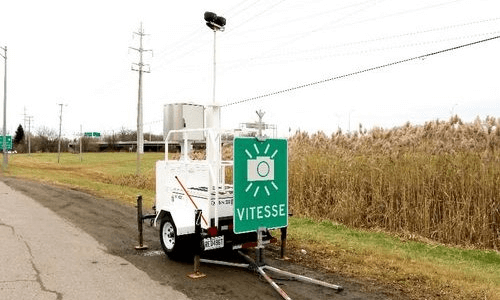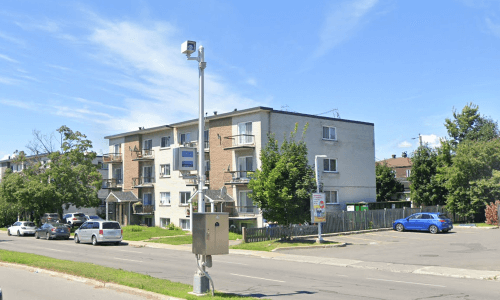What to do if you receive a ticket
Upon receiving a statement of offence, you have 30 days to enter a plea of guilty or not guilty. If you plead guilty, you pay the fine according to the timeline indicated on the notice and the file will be closed. If you want to dispute the offence, you can plead not guilty. The infraction will go to trial, and you will receive a hearing notice telling you when and where to appear for it.
Even if you plead guilty to a charge of speeding or a red-light violation, you will not receive demerit points and it will not affect your car insurance, because the photo radar identifies the vehicle but not the driver.
Fines
In Quebec, penalties for speeding vary based on the severity of the offence. Fines for speeding start at $30, with additional charges depending on how much the speed exceeded the limit. 2 Here’s how the extra costs are calculated:
- Exceeding the speed limit by 1 to 20 km/h: $10 for every 5 km/h
- Exceeding the speed limit by 21 to 30 km/h: $15 for every 5 km/h
- Exceeding the speed limit by 31 to 45 km/h: $20 for every 5 km/h
- Exceeding the speed limit by 46 to 60 km/h: $25 for every 5 km/h
- Exceeding the speed limit by 61 km/h or more: $30 for every 5 km/h
The fines can also be doubled in some areas, such as school zones or construction areas, or if you’re speeding excessively relative to the posted limit.
You must also pay legal costs and contribution. Contribution is a mandatory amount that goes to the Crime Victims Assistance Fund and the Access to Justice Fund.
Commonly asked questions
Will a speeding ticket issued from photo radar affect my insurance premium?
No. An offence detected by photo radar will not affect your premium, because the camera does not identify the individual who was driving the vehicle at the time of the offence. By the same token, you would not be assessed demerit points.
However, if the ticket is issued by an officer, your premium will be affected and you could be assessed demerit points, depending on the severity of the offence. This is because an officer pulling over a driver for speeding or running a red light will positively identify the driver.
What happens if someone else was driving my car when the photo radar ticket was issued?
As of July 1st, 2024, Quebeckers can no longer identify another person who was driving their vehicle at the time of the offence. The owner of the vehicle is responsible for any photo radar ticket, regardless of who was behind the wheel. 3
Isn’t photo radar just a way for the government to fill its coffers?
No. Fines and costs arising from offences detected by photo radar go to the Road Safety Fund, and these sums may only be used to finance road safety measures or programs, and assistance for road accident victims. 1
Sources
- Gouvernement du Québec. “About Photo Radar.” quebec.ca, 6 Sept. 2024, www.quebec.ca/en/transports/traffic-road-safety/photo-radars/about-photo-radars.
- Société de l’assurance automobile du Québec. “Speeding: Fines and demerit points.” saaq.gouv.qc.ca, saaq.gouv.qc.ca/blob/saaq/documents/publications/speeding-fines-demerit-points.pdf.
- Gouvernement du Québec. “Paying a fine.” quebec.ca, 28 June 2024, www.quebec.ca/en/justice-and-civil-status/offences-and-fines/payment-fine.
Want to learn more? Visit our vehicle owner resource centre for dozens of helpful articles. Or, get an online car insurance quote in under 5 minutes and find out how affordable personalized coverage can be.
About the expert: Jil McIntosh
Jil McIntosh writes professionally about a variety of automotive subjects, and has contributed to such publications as Driving.ca, AutoTrader.ca, Automotive News Canada, Old Autos, Toronto Star Wheels, and more. A member of the Automobile Journalists Association of Canada (AJAC), she has won numerous awards for her writing, including Automotive Journalist of the Year.





